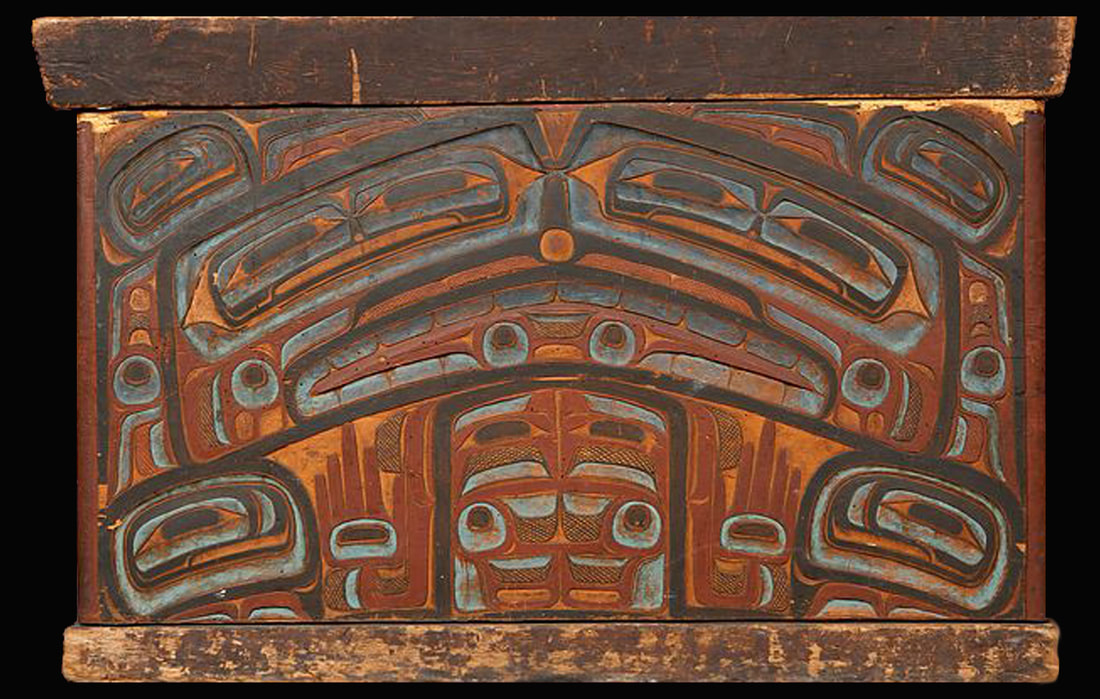The image above is of a bentwood cedar chest (object #2443) in the Northwest Coast collection of University of British Columbia Museum of Anthropology. I photographed this chest while doing pigment research at the at the museum several years ago. This chest is a beautiful example of the elegant composition of formline art. The pigments on this chest are red ochre, vivianite and an unknown black pigment. The maker of this chest was Albert Edward Edenshaw, a Haida master carver who produced exquisite cultural objects that are now called "art".
Northern art is characterized by the defining lines (usually painted in black, sometimes in red) which outline the main features of the design. In this design you can see the face, salmon trout eyes in the corners (which are respectively ears and hip joints), the body (center below face) and the details of the face are outlined in a swelling and narrowing black line. The primary line or field is one continuous line throughout the design.
There are three fields in formline: the primary, which is the surface and usually painted black. The secondary, which is also surface and usually painted red. The third field is called tertiary and, in carved work, is the shallow relief areas typically left unpainted or painted blue or green. These three fields are evident in both painted carved pieces and those which are either only painted or carved.
Northern art is characterized by the defining lines (usually painted in black, sometimes in red) which outline the main features of the design. In this design you can see the face, salmon trout eyes in the corners (which are respectively ears and hip joints), the body (center below face) and the details of the face are outlined in a swelling and narrowing black line. The primary line or field is one continuous line throughout the design.
There are three fields in formline: the primary, which is the surface and usually painted black. The secondary, which is also surface and usually painted red. The third field is called tertiary and, in carved work, is the shallow relief areas typically left unpainted or painted blue or green. These three fields are evident in both painted carved pieces and those which are either only painted or carved.

